As someone with a chronic illness, reading sci-fi and fantasy books that feature characters with disabilities has had a huge impact on me. It’s valuable to see myself as a hero and not just a character on the sidelines who’s too “broken” to go on an adventure. I don’t exist to inspire other people, I’m not useless until I’m healed, and I don’t have to overcome my disability to be worth something. I want the fiction I read to embrace diversity and include characters who are learning to deal with their conditions—just like me.
Each of the books on this list includes a character who has chronic pain or a disability, who plays a significant role in the story. I appreciate how these characters all wrestle with their conditions and learn to value themselves—despite others telling them they’re useless.
Elantris by Brandon Sanderson
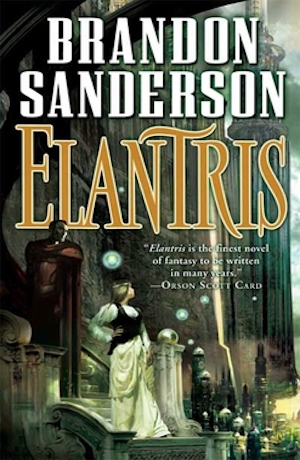
In Sanderson’s first published book, anyone in Arelon has the potential to turn into an Elantrian. Because magic. While this used to be a celebratory event (Elantrians were long-lived, immortal beings with healing powers), it’s now a curse. Ten years ago, the magic of Elantris was destroyed, the city sealed off, and anyone who turns into an Elantrian is thrown into the city and abandoned. They’re left there forever to deal with bodies that are immortal but unable to heal at all—if an Elantrian injures themselves, that pain never goes away. Over time, injuries, even minor ones like stubbed toes or paper cuts, accumulate and drive the Elantrians mad.
Prince Raoden is transformed into an Elantrian at the beginning of the story. Cast out into Elantris, he becomes intimately familiar with chronic pain. Raoden inspires other Elantrians, not simply by existing, but by encouraging them to focus on other things instead of their suffering and helping them cope. Then, as his own injuries accumulate, he has to learn to cope himself.
A Curse so Dark and Lonely by Brigid Kemmerer
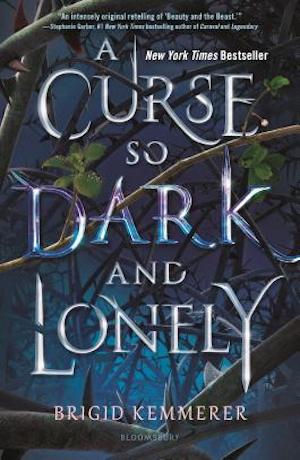
In this twist on Beauty and the Beast, protagonist Harper has cerebral palsy. It definitely doesn’t stop her from being this story’s hero, and she refuses to be put into the role of damsel-in-distress or Stockholm syndrome victim as the narrative unfolds. As Harper learns more about the magical land she’s been transported to and the prince’s curse, she stubbornly fights back and puts her life on the line for the sake of innocents. She falls in love with the fantasy world and the people in it, realizing she can be a positive force for good there.
While there is opportunity here for her condition to cause her a few more problems than it does (it mostly manifests as a limp), I appreciate how her self-consciousness transforms into confidence. People in her previous life constantly undervalued her and considered her worthless; this message has been sent to her so often that she had started believing it herself. In this new world, she embraces her true value, makes friends who don’t view her as a liability, and sees her condition as a part of her that she doesn’t need to change.
Star Wars: Bloodline by Claudia Gray
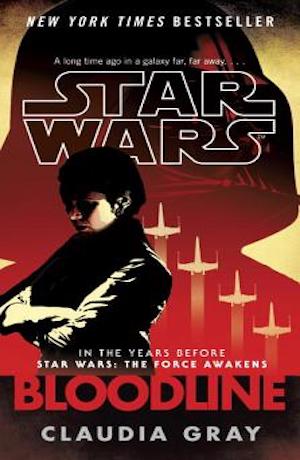
Set twenty years after Return of the Jedi and a few years before The Force Awakens, Bloodline follows Senator Leia Organa and the events that lead to her forming the Resistance. Greer Sonnel is Leia’s assistant and accompanies her on these adventures. Greer’s backstory is unpacked throughout the novel, and we learn that she trained to be a starfighter pilot before she mysteriously had to quit flying. Greer has Bloodburn Syndrome, a rare, chronic illness that affects starship pilots due to space travel, causing fevers (and sometimes death).
Greer hides her condition from most people because she doesn’t want to be treated differently. She has learned to manage her illness but has had to deal with crushed dreams due to a condition she can’t control. She obviously loves flying and grieves the loss. Despite this, she pushes herself to do what she can within her limitations, fighting alongside Leia to be part of the Resistance.
Carve the Mark by Veronica Roth
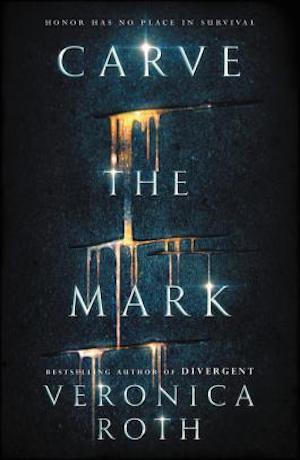
Some people are gifted with magical abilities in the world of Carve the Mark, but Cyra Novak would not describe her ability as a “gift.” Her power is chronic pain—and she has the ability to transfer it to others by touch. Her brother is the tyrant leader of the Shotet people and uses Cyra to torture prisoners.
Cyra is an incredibly strong fighter and trains every day—something, I’ll admit, I scoffed at a little because I know how exhausting chronic pain is, and the toll it takes on your body. I had a hard time believing she would be so physically fit and wouldn’t just lie in bed some, if not most, days. But what I did relate to was her guilt: Cyra feels like she deserves her pain. Throughout this series and the relationships she builds, Cyra works through these emotions and strives to make peace with a condition that threatens to swallow up her life.
Cinder by Marissa Meyer
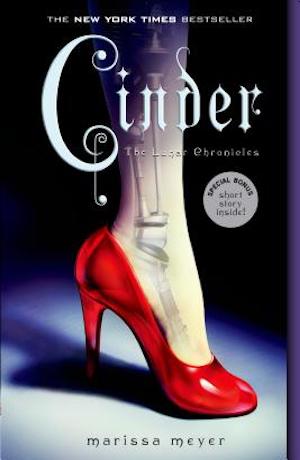
Cinder is a cyborg in a futuristic fairy tale where cyborgs are second-class citizens. Without basic human rights, they are experimented on and considered disposable simply because their bodies are different. Cinder also lives in poverty, a common reality for people with disabilities and conditions. Throughout most of the story, she has to deal with a limp because her stepmother won’t let her buy a foot that fits her better than her child-sized prosthesis. But mostly, her condition is “invisible,” and she tries to hide her cyborg identity from the prince because she’s afraid he will not want to associate with her if he knew the truth.
I love that Cinder doesn’t fall into stereotypes: she is a talented mechanic, clever, stubborn, and determined to escape those who hold power over her. Cinder explores the stigmas that come with being disabled in a culture that pressures people to conform to able-bodied standards. Her story is about coming to terms with her identity and valuing herself despite a society that says she’s worthless.
Allison Alexander edits sci-fi and fantasy at a small press, writes books, and plays video games the rest of the time. She is the incurable author of Super Sick: Making Peace with Chronic Illness, a geek’s guide to living with a disability. You can find her chasing bokoblins in Hyrule, traipsing with hobbits in Middle-earth, or blogging at aealexander.com.










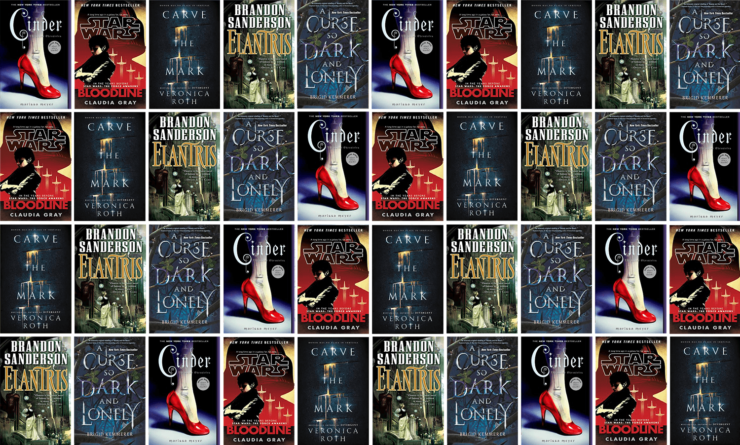
Dr. Bloodmoney by Philip K. Dick.
Lord Foul’s Bane by Stephen R. Donaldson.
Zariya from Jacqueline Carey’s Starless!
Waldo Farthingwaite-Jones, in “Waldo” by Robert Heinlein, originally published in Astounding in August 1942.
Miles Vorkosigan from Bujold’s Vorkosigan Saga. Also some lesser characters with lesser disabilities, such as Koudelka’s permanently nerve damaged arm.
Blade of Tyshalle by Matthew Woodring Stover.
Jo Walton’s protagonist in Among Others –there is a reason I’m not mentioning her name.
Dan Wells writes some of the best mental illness I’ve ever seen in a book and uses it in a way that both highlights the difficulties one faces while celebrating the individuality that comes with it.
Larry Dever in “The Godwhale” by T.J. Bass
Commander Doyle in Islands in the Sky, Artur C. Clarke.
https://archive.org/details/Islands_in_the_Sky_1956.Winston_Arthur_C._Clarke
Bartolomeo in Ship of Fools by Richard Paul Russo. A personal favorite novel about a generation starship with a good blend of horror. Won the PKD Award, book is also published under the title Unto Leviathan.
Since there are disabilities that aren’t physical, Charlie of Flowers for Algernon, who is intellectually disabled.
Clarke also wrote a physically disabled character after Doyle of Islands in the Sky, that is Falcon, in “Meeting with Medusa.”
Damn, you people are good! I came here to mention Miles Vorkosigan, saw somebody’d beat me to it, decided I’d go ahead and mention Heinlein’s Waldo, and there it was.
Okay, Leigh Bardugo has a disabled character in, let me see, what was it, Six of Crows, I think? Kaz.
Elizabeth Bear’s “Jenny Casey” trilogy (Hammered, Scardown, and Worldwired) has a 50-ish woman solder whose missing limbs have been replaced with cybernetic implants.
Also Eugenides Megan Whalen Turner’s The Queen’s Thief series (5 books). Is not disabled when the story starts but . . .
@5 – Koudelka’s problems extend far beyond his arm. I believe a majority of his nervous system, at least the major nerves, has been rewired.
Alana Quick in Ascension by Jacqueline Koyanagi has an autoimmune disease, and is also a queer woman of color. First time I read a book where the protagonist as a disease that operates similar to mine.
Steris from the Wax and Wayne Mistborn trilogy, is somewhere on the Aspergers/Autism spectrum.
Millie Roper, protagonist of The Arcadia Project trilogy by Mishell Baker, who has BPD and uses both wheelchair and prosthetic legs. The author herself also has BPD, so seeing how Millie deals with it is an incredibly intimate experience that’s so well written I almost felt like I was intruding to read it, and yet I knew I was better educated for knowing it.
And Elizabeth Moon also wrote a book where the protag was autistic (though i can’t remember the name…)
I actually feel very nostalgic about Waldo – i became disabled at 9 (though it was mostly invisible) and i really did spend a LOT of time trying to do his… thing. I should re- read Waldo, so i can remember what that is…
Also, though they’ve changed it, for a VERY long time, Oracle (Barbara Gordon, 1st Batgirl) paralyzed from the waist down, yet EVERY MEMBER of Justice League needs her…
Kaz Brekker from Six of Crows is probably my favorite example (and also one of my favorite characters period). He embraces the use of his cane, doesn’t let his disability slow him down, and has even on occasion used it to his advantage.
Mishell Baker’s Arcadia project books character Millicent Roper.
#20 The Elizabeth Moon novel is Speed of Dark. Another sf novel with a main character — and author– on the autism spectrum is Corinne Duyvis’ On the Edge of Gone.
Emily Alexander from the Honor Harrington series…she was in an accident that basically left her paralyzed except for the use of one arm, and still manages to be a political force and do many things.
There are also many SFF military characters who receive wounds in battle and have to deal with the aftermath…in many cases they get upgrades with new technology (as Honor Harrington does), but usually the books don’t deal with the consequences and changes of the wounds. Some do it well though…Honor’s wounds in battle are treated realistically, and an entire book deals with how she has to deal with her disabilities without the future tech prostheses.
The Call by Peadar O’Guilin features a main character who deals with polio
Right now I am reading the Risen Kingdoms trilogy by Curtis Craddock and one of the main characters has a disability that makes her a complete parrhia in her society along with other people besides her.
Shout out to Lois McMaster Bujold’s fantasy novels as well – in the Sharing Knife, Dag lost his hand in battle so he uses prosthetics while killing monsters. There is also a blind aunt and side characters with various illnesses – healing is a major theme.
I think that Paul Formain (“Necromancer” – Gordy Dickon’s “prequel” to his Dorsai milieu) fits. In fact it is his disability (lost arm) and his reaction to it that create the man he becomes.
“Scanners Live In Vain” by Cordwainer Smith
The Long A.R.M. of Gil Hamilton stories by Larry Niven.
And Xandri Corelel in some of Kaia Sønderby’s stories is autistic, and the stories contrast a relatively inclusive ship’s crew with an exclusionary world.
Although Oracle/Batgirl in the New 52 has regained her physical abilities, she’s still struggling with PTSD.
And many of Tolkien’s characters have PTSD.
I’m having a lot of trouble with the “verification expired” popping up every few seconds. Can anyone suggest stories with photosensitive or other sensory-sensitive characters, especially with severe reactions?
Lauren Oya Olamina from Octavia Butler’s Parable of the Sower. She has what was called ‘hyperempathy’ where she feels what she sees others endure. Someone gets punched in the gut in front of her and Laura also feels the pain. It is always present but never stops her from her journey.
“Welcome to the Occupied States of America” by Peter Cawdron. It’s seven years since the invasion. Seven years since Ashley Kelley was paralyzed by a cluster bomb. Seven years just getting back the ability to stand up for brief periods. She’s lost almost everything and is determined she’s no longer going to sit and take it anymore. Human, Alien, Ashley has wheelchair, will travel. Her adventure is complicated by the aliens’ ability to shape shift and perfectly mimic almost anything, including her wheelchair.
Many people have chronically painful conditions and they just have to put up with and work through the pain in order to make a living. Then Medicaid and private insurance refuses to cover costs because “You can work. You can walk.” If you’re not stuck in a wheelchair 24/7 or haven’t lost a leg or arm they don’t want to help.
Sand dan Glokta, Joe Abercrombie’s ruthless inspector.
Curse you people. First for taking all the protags I could think of and for knowing so many more. My reading list grows yet again
.
Now I have a bunch MORE book that sound awesome that I want to read.
Tanya Huff’s Blood books. Protagonist has vision problems that forced her to quit her job as a police detective, so she became a PI instead.
With all the Bujold stories mentioned above, I kept looking for Chalion in The Curse of Chalion. Really liked that character and that story, way back when.
@23 – yes! That’s the book i was thinking of!
@31 – i refuse to read New 52. For so many reasons. That said – how does every vigi/ hero in ANY comic not have PTSD? Not that I’d wish it on anyone (it really really sucks) but take Batman. He doesn’t even get the basic counseling cops get after incidents, and he has incidents WEEKLY! But to my knowledge (before your post) only Jason Todd was ever written with it. Sigh
And i want to thank everyone for posting so many great stories for new to read
The protagonist in Mogworld comes to mind—he was brought back to life against his will, to exist as a zombie. The longer he continues to “live”, the more his body decays and falls apart. However, I’m not sure he’s a very good example, since he spends most of the story trying to figure out how to die, permanently this time.
Juliet Marillier’s Sevenwaters series. Book 3 has a protagonist with a clubfoot. Book 7’s protagonist has severely damaged hands she can barely use for anything and needs a lot of ingenuity to accomplish otherwise simple tasks.
@@@@@ 35. wolfkin: I know JUST how you feel….
Ok, maybe he starts off as a caricature of sorts, but Gifford in the Legends of the First Empire has a pretty good arc.
‘Master of Paxwax’ springs to mind. He was a sort of Richard III-type figure. I haven’t read this book since it came out, but was surprised (on googling it) how it has so little visibility, given that I remember it being pretty good. Pawl, the mc, isn’t the only one with a deformity either.
Corum – one of Moorcock’s Eternal Champions – loses an eye and a hand to torturers and has them replaced with body parts borrowed from two gods, then with prosthetics he makes himself.
Plus ‘Fatale’ in ‘Soon I will be Invincible’
Re the latter two, I wonder about the merits of including people who have had their disabilities supplemented with some sort of enhancement? I’m not sure you could really describe, say, the bionic man as somebody who is actually living with a disability. Plus including such people would make for a very long list!